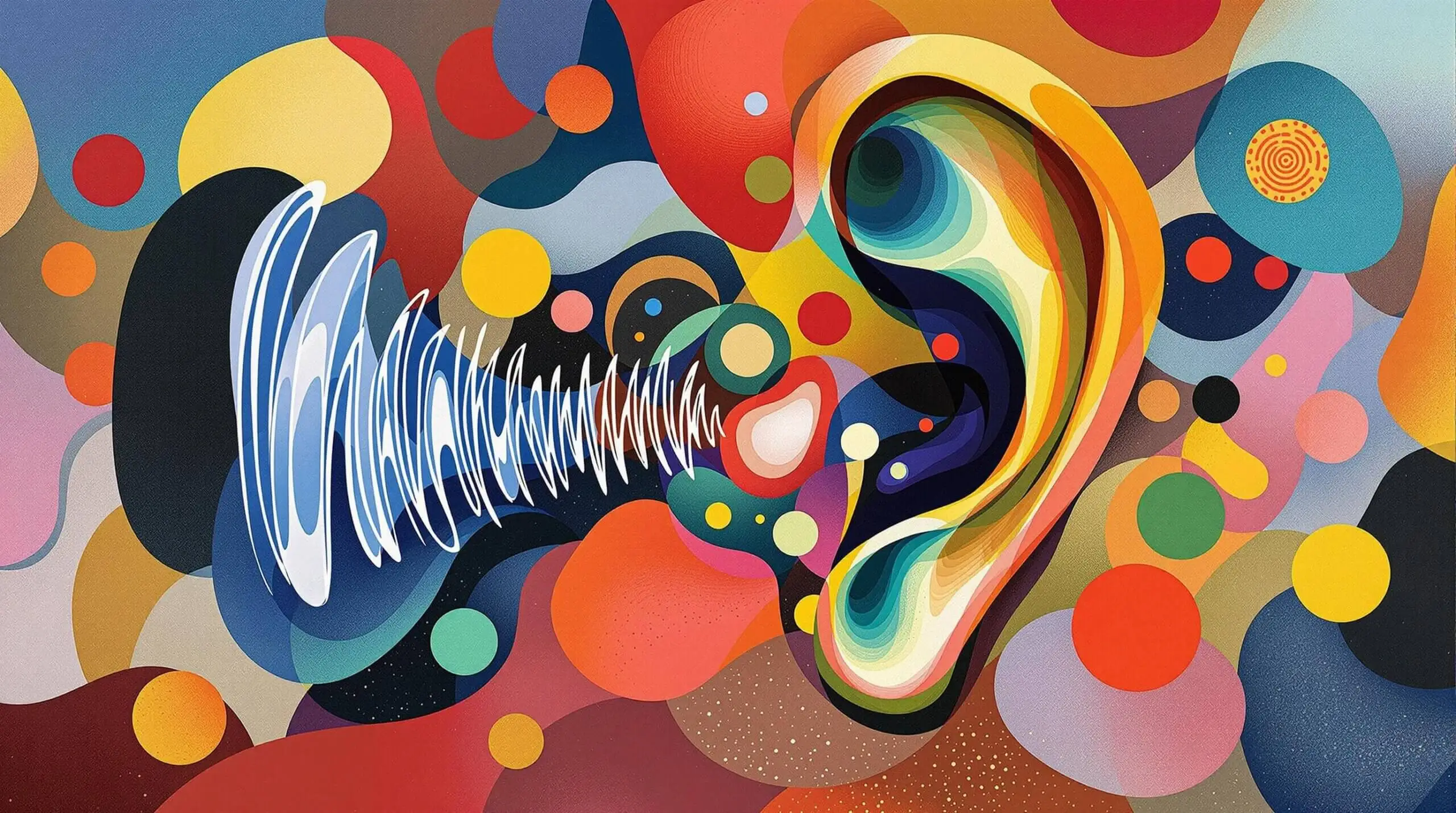Longevity’s Echo: How Sound Waves Rejuvenate Cells
Explore how sound waves can rejuvenate cells and contribute to longevity.

Understanding Sound Waves and Cellular Rejuvenation: The Basics
The Science of Sound and Cellular Health
Sound waves might be invisible, but their impact on our cells is anything but. Recent research has revealed that specific sound frequencies can stimulate cellular repair mechanisms, potentially slowing down aging at its most fundamental level. It’s like giving our cells a gentle shake – awakening repair processes that naturally decline with age.
How Sound Influences Cell Behavior
Cells respond to sound through a process called mechanotransduction – converting mechanical forces into biochemical signals. Think of it as cellular massage. When sound waves hit our tissues, they create tiny vibrations that trigger cellular cleaning mechanisms, boost energy production, and enhance protein synthesis. Scientists have found that frequencies between 20-100 Hz can be particularly effective at stimulating cellular regeneration.
The Evolution of Sound Therapy Research
While ancient civilizations used sound for healing, modern science is now validating these practices. Research started in the 1960s with simple vibration studies, but advanced technology has revealed how sound waves influence cellular behavior at the molecular level. The field has expanded dramatically in the last decade, with breakthroughs in understanding how specific frequencies affect different types of cells.
Key Discoveries and Breakthroughs
Recent studies have shown that sound waves can activate cellular autophagy – our body’s natural cleaning system. They’ve also been found to improve mitochondrial function, essentially supercharging our cellular batteries. Perhaps most exciting is the discovery that certain frequencies can stimulate the production of proteins associated with longevity and stress resistance.
Research Data and Statistics
Laboratory studies demonstrate that cells exposed to specific sound frequencies show up to 50% increase in energy production. Clinical trials have reported 15-30% improvements in cellular repair markers after sound therapy sessions. Research from MIT suggests that sound waves can enhance brain function and potentially reduce the risk of neurodegenerative diseases by up to 40%.

Current Applications of Sound Wave Therapy
Medical Applications
Sound wave therapy is making waves in modern medicine. Hospitals now use focused ultrasound for treating various conditions, from kidney stones to cancer. Low-frequency sound therapy shows promise in reducing inflammation, accelerating wound healing, and improving tissue regeneration. The technology is particularly effective in treating age-related conditions like arthritis and muscle deterioration.
Wellness and Anti-aging Applications
Beyond medical settings, sound therapy is finding its way into wellness centers and anti-aging clinics. These treatments often combine different frequencies to target multiple aspects of cellular health. Some spas now offer “sound baths” that use specific frequencies to promote cellular rejuvenation and stress reduction.
Understanding the Mechanisms of Sound Wave Therapy
Cellular Response to Sound Waves
At the microscopic level, sound waves create something called acoustic streaming – tiny currents in the fluid surrounding cells. These currents stimulate cellular membranes, triggering various beneficial responses. The cells become more efficient at removing waste, producing energy, and repairing damage. It’s like giving them a tune-up at the molecular level.
The Role of Frequency and Amplitude
Different frequencies affect cells in distinct ways. Lower frequencies (20-50 Hz) tend to promote relaxation and repair, while higher frequencies (100-200 Hz) can stimulate energy production and protein synthesis. The amplitude, or strength of the sound waves, must be carefully controlled to avoid damage while maximizing benefits.
Impact on Different Cell Types
Research shows that various cell types respond differently to sound waves. Muscle cells might benefit from frequencies that promote protein synthesis, while nerve cells respond better to frequencies that enhance mitochondrial function. Skin cells show improved collagen production with certain sound wave patterns.
Practical Applications and Benefits
- Enhanced cellular repair and regeneration
- Improved mitochondrial function
- Increased protein synthesis
- Better waste removal from cells
- Reduced cellular inflammation
- Improved circulation at the cellular level
- Enhanced brain cell function
- Accelerated wound healing
- Reduced signs of cellular aging
- Better stress response at the cellular level
Implementation Strategies
Professional Treatments
Professional sound therapy treatments typically use specialized equipment that delivers precise frequencies to specific body areas. These sessions usually last 30-60 minutes and might combine different frequencies for optimal results. Regular treatments, often weekly or bi-weekly, show the most significant benefits for cellular rejuvenation.
At-Home Applications
Several devices now allow for home-based sound therapy. These range from simple frequency generators to sophisticated systems that can target specific body areas. While not as powerful as professional equipment, these devices can provide meaningful benefits when used consistently.
Safety and Considerations
Important Safety Guidelines
Sound wave therapy is generally safe, but proper protocols must be followed. Exposure time, frequency levels, and intensity need careful monitoring. People with certain medical conditions, particularly those affecting the nervous system or circulation, should consult healthcare providers before starting treatment.
Potential Risks and Contraindications
While rare, excessive exposure to certain frequencies can cause temporary discomfort or fatigue. Pregnant women and people with pacemakers should avoid some forms of sound therapy. It’s essential to work with qualified practitioners who understand these considerations.
Future Developments and Research
Emerging Technologies
New technologies are making sound wave therapy more precise and effective. Researchers are developing targeted delivery systems that can focus sound waves on specific cell types. AI-driven systems are being created to optimize frequency patterns for individual needs.
Ongoing Research
Scientists are investigating how sound waves might help prevent age-related diseases. Studies are looking at the potential of sound therapy to protect against cognitive decline, improve immune function, and extend healthy lifespan. Early results suggest that combining sound therapy with other longevity interventions might have synergistic effects.
Guidelines for Optimal Results
- Start with lower frequencies and gradually increase intensity
- Maintain consistent treatment schedules
- Stay hydrated before and after treatments
- Combine with other healthy lifestyle practices
- Monitor your body’s response
- Keep treatment sessions within recommended durations
- Use qualified practitioners for professional treatments
- Follow manufacturer guidelines for home devices
- Document your results and adjust as needed
- Take breaks between sessions to allow for cellular adaptation
Sound wave therapy represents a fascinating frontier in cellular rejuvenation and longevity science. The evidence supporting its benefits continues to grow, suggesting that this technology could play a significant role in future anti-aging strategies. By understanding and properly applying sound wave therapy, we might access a powerful tool for maintaining cellular health and extending our healthy years. The key lies in proper application, consistent use, and integration with other health-promoting practices.